- Home
- Iris Murdoch
The Unicorn Page 2
The Unicorn Read online
Page 2
It is of the whole land that Denis speaks when Marian indignantly objects to Hannah’s seclusion ‘People can’t be just shut up. We’re not living in the Middle Ages’ – ‘We are here.’ That, like the image of the Unicorn itself, the beautiful uncatchable white beast who is a symbol for Christ, for Hannah, is a touch which recalls the Faerie Queene. So is the name which Marian finds for the whole area when she sees it from the south, near the little harbour of Blackport where ‘the landscape was gentle, ordinary, human. It was the end of the appalling land.’ Effingham repeats the name at the end as he leaves the little railway station on the north, in the Scarren, and closes ‘his eyes upon the appalling land.’
The appalling land, the land of the sublime, the land of unselfing: if the kind of name is Spenserian the ethic behind it is not. Iris like Spenser derives parts of her ethic and aesthetic from Plato, and therefore like Spenser makes the central pillars of her thought love and beauty. But whereas Spenser inherited his relation to Plato through the Neo-Platonists and Christianity, and believes in a universe that is translucent, ordered and hierarchic, Iris seems to have come to Plato through Simone Weil, whom she read in the mid-fifties, and through Freud. Simone Weil seems to have crystallised for her a distrust of power in all its forms, Freud a fear of fantasy and self-delusion, and both a conviction of the near total selfishness of ordinary humanity. In contrast with these three negative starting points she built up the notion of respect for reality of which we have already seen something, and therefore of a way of understanding the world, of loving its beauty, which is free of our fantasizing and sado-masochistic projections of power and selfishness. She found a model for this in Plato’s myth of the cave in the Republic. We find ourselves fettered in the darkness of a cave where we see only by the inconstant flames of our own desires: our business is to break out of this darkness and see by the light of something whose relation to our desires is like the relation of the sun to firelight. Iris accordingly believed, as Plato believed, that the ordinary practical choices of our life depend on our knowing what is good as an absolute value, which exists independently of our personal desires, and which makes sense of all that we experience, as the sun illuminates all our physical world. As Max Lejour puts it in The Unicorn, good is more than ‘a matter of choosing, acting’ because
what we can see determines what we choose. Good is the distant source of light, it is the unimaginable object of our desire. Our fallen nature knows only its name and its perfection. That is the idea which is vulgarised by existentialists and linguistic philosophers when they make good into a mere matter of personal choice. It cannot be defined, not because it is a function of our freedom, but because we do not know it.
Iris learnt from Simone Weil the importance of attention, of attention to the good which we shall perhaps never see directly any more than we can look directly into the sun, but which we can learn to see by in proportions as we train ourselves not to see by our desires. But what bridge can there be between this austere vision, which seems to demand the contemplative life as a precondition of the active life, and the ordinary business of practical choice? Iris was committed to the belief that good art, where we can find it uncontaminated by projection and fantasy (Plato was doubtful whether it exists at all) forms such a bridge. Some of her novels -The Bell, for example, and The Unicorn seem designed to show the contrast between the two lives illuminated by the two contrasting lights, and to offer a shift in point of view from one to the other. In both books, moreover, she offers a model of how this might happen not through a novel, but through a painting.
In The Bell there is a wonderful passage in which Dora finds the pictures in the National Gallery transforming her sense of the world, and in particular
Gainsborough’s pictures of his two daughters. These children step through a wood hand in hand, their garments shimmering, their eyes serious and dark, their two pale heads, round full buds, like yet unlike…It occurred to her that here at last was something real and something perfect. Who said that, about perfection and reality being in the same place? Here was something which her consciousness could not wretchedly devour, and by making it a part of her fantasy make it worthless…the pictures were something real outside herself, which spoke to her kindly and yet in sovereign tones, something superior and good whose presence destroyed the dreamy trance-like solipsism of her earlier mood. When the world had seemed to be subjective it had seemed to be without interest or value. But now there was something else in it after all.
This is a highly Platonic way of describing the effect of beauty, even if Plato himself doubted if art could achieve the sort of beauty required. It is in fact an excellent description of what is intended by the Greek and Russian Orthodox who inherit Platonic aesthetics through Byzantine art, in their icons. I once, I think, saw Iris reacting to an icon as Dora did to Gainsborough’s picture, and the moment must have been one of the seeds of The Unicorn. It was at Oxford in the early spring of 1962, when she had just ceased being my supervisor, and I asked her and John to dinner in Merton College. I had hanging in my sitting room a colour photograph of an icon not very well known in England at that time, and Iris had not known it, St. Andrew Rublev’s Hospitality of Abraham. It shows the three angels who, according to the book of Genesis, appeared to Abraham to announce the birth of Isaac, and to tell him of God’s counsels in the judgement of Sodom and Gomorrah. Christian tradition interprets them as a revelation of the Trinity, and it is the Trinity that Rublev depicts through the relation and gaze of the heads, not unlike Gainsborough’s daughters ‘round full buds, like yet unlike’, through a subtle combination of movement and stillness, of circle and triangle in the composition, and through something numinous in the colours, purple, blue, green and rose embraced and dominated by the gold of the angels’ wings. Iris leapt up on the table beside it like a little cat that sees prawns offered him, and examined it, wholly absorbed. Later she sent me a copy of The Unicorn, and a card saying that she had seen the original in the Tretyakov gallery in Moscow. Something like it is what Effingham sees in Hannah with Marian and Alice, drawn
together into a single fuzzy golden orb…The three angels were a radiant globe out of which light streamed forth…He looked up at Hannah and found himself suddenly able to see her quite clearly as if a light had been shone on her and as if the other two faces had been merged into hers leaving only one image.
I say ‘something like it’ because Rublev’s icon is in its own way deeply involved in history and story. The angels have behind them a house, a tree and a mountain which all play parts both in the story of Abraham and in the symbol system of the whole Bible, and in front of them a dish on which a little beast represents both the calf with which Abraham fed the angels and the Lamb of God, and so the story of Christ. Both here and in her use of the icon in a later novel, The Time of the Angels, Iris omits all this, perhaps because she wants the icon to be an epiphany and not a story, and the circle of gold to correspond to something holding the whole world together, and not to any history within it.
On the other hand, Effingham’s vision implicitly corresponds to one feature which Rublev is said to have been the first to introduce into the subject of the hospitality of Abraham. Abraham and his wife Sarah are not represented, so that the viewer takes the fourth place at the table with the angels, as Effingham does with the three women.
Stumbling, and somewhat full of whiskey, Effingham tries to relate what he sees before him to what he had seen in the bog the previous night, and to the teachings of his old tutor, Max Lejour.
You see, it’s not a bit like what Freud and Wagner think…You see, death is not the consummation of oneself but just the end of oneself. It’s very simple. Before the self vanishes nothing really is, and that’s how it is most of the time. But as soon as the self vanishes everything is, and becomes automatically the object of love. Love holds the world together, and if we could forget ourselves everything in the world would fly into a perfect harmony, and when we see beautiful things that
is what they remind us of.
It is very tempting to see in this passage the union of the sublime and the beautiful, the explanation of unselfing and the idea of the good seen through beauty and love which the book has been asking for. And although in the helter skelter incidents that follow Hannah, the actual beautiful Hannah, loses her capacity to symbolise the good or the beautiful as Gerald Scottow uses the announcement of Peter’s return (which he may have faked himself) to seduce her, which leads first to her abandonment by those who have loved her – Marian, Effingham, Denis – and then to her killing first Gerald and then herself, it is still tempting to conclude as Effingham does that what she symbolised remains true: ‘It had been a fantasy of the spiritual life, a story, a tragedy. Only the spiritual life has no story and is not tragic’
If so, however, the bridge between the spiritual life and ordinary life by any kind of symbol seems almost entirely useless. Effingham, who had the vision, deserts Hannah immediately at the news of her husband’s coming, repeating his watchword ‘It happens quite automatically’ as Hannah cries out to him to stay. When he returns it is too late: Gerald has seduced Hannah and Effingham briefly turns to Alice as ‘his health, his crucifix, his redeemer’ to whom he gives explanations of a very facilely Freudian kind-of Hannah as having been to him ‘the Virgin mother’ who redeems ‘the sin of his own mother’s betrayal of him with his father’ when ‘because of his unconscious resentment of his own mother’s sin of sex, he had been, he explained, unable to establish any satisfactory relations with women other than those of Courtly Love.’ When Hannah is dead, Alice loses all attraction for him too, and he flees back to London, his last act being the decision ‘with a sense of craven relief not to return to Riders when he sees in a newspaper at the railway station the news that Pip Lejour has killed himself, and the last thought of his that is vouchsafed to us being the quite false belief that Marion Taylor is in love with him. It is a kind of Platonic joke about him that in London he is the apparently perfectly efficient head of some important branch of the civil service: there is no link between any vision that he might have and what goes on in the cave, the ordinary world.
So far as Effingham Cooper’s side of the story is concerned, it seems as if one should conclude that the model of the good is Alice Lejour, who has never had any vision at all, whose actions are all practical and good, and to whom, since Hannah made her will in favour of Max Lejour (who is we are told very near death) and since Pip Lejour is dead, all Hannah’s property will descend, unless in self-sacrifice she rejects it in favour of Hannah’s poor relations, Violet and Jamesie Evercreech.
She may well do so: she is a type of self-sacrificing love, and if she is mildly comic, one might remember Dostoevsky’s note when he was trying to imagine a purely good person while writing The Idiot, that the English novelists manage it by making their purely good characters comic. He had in mind perhaps Parson Adams in Fielding’s Joseph Andrews, and possibly Mr. Pickwick in The Pickwick Papers. But though Alice’s goodness is a very important truth, it is a truth which deals with the terrible sides of the world of The Unicorn, with death and guilt above all, simply by pushing them to one side. Alice does not need the contemplative life: she simply acts as if she saw by the light of the good without being aware of it.
But there are two personalities from the ordinary world through whose eyes we see everyone else in the appalling land. One is Effingham Cooper, whom in the end we dismiss, and the other is Marion Taylor, their viewpoints alternating very symmetrically through the book. Her summing up is more complex than Effingham’s: ‘she did not know whether the world in which she had been living was a world of good or of evil, a world of significant suffering or a devil’s shadow-play, a mere nightmare of violence.’ Whatever it had been, it left her able to appreciate Alice, as is immediately said ‘dear, solid, real, ordinary Alice. Good Alice.’ And she, unlike Effingham, goes back from the appalling land ‘to the real world’ a little changed, since she came knocked off balance by an inconclusive love affair with her friend Geoffrey, and goes back to ‘dance’ at his wedding to another friend of hers.
Marian’s relation to Hannah has naturally not been one of Courtly Love like Effingham’s, a vision of beauty. It has been rather the gradual discovery of something which she regards initially as morbid, the story which somewhat recalls T. S. Eliot’s Family Reunion and Harry’s pursuit by the Furies because he does not know to what degree he was responsible for his wife’s death overboard from a ship. Hannah cannot like Harry flee the Furies, though her guilt in relation to her husband exactly parallels Harry’s: instead her husband keeps her confined, watched by Gerald Scottow, whom Marian at one point thinks ‘the centre from which the furies came.’ Denis Nolan tries to persuade Marian that Hannah has ‘made her peace with God’, but this means little to Marian who sums it up for Effingham as ‘Hannah took to religion, or the spiritual life or whatever the hell it is, like someone taking to a drug. She had to.’ And indeed the idea that Hannah has peace with God has already been fairly disproved by the ‘possessive savagery ‘ with which she speaks of Denis: ‘I think he would let me kill him slowly’, and is presently to be disproved again by the hysterical pain which, conversely, Denis elicits from her when he sings Charles Dalmon’s song, ‘O what if the fowler my blackbird has taken’. It is this outburst which persuades Effingham to help Marian in her direct action to kidnap Hannah and take her forcibly from her seclusion. It seems to be this action, which fails disastrously, that prompts, although we never quite know, Gerald’s possession of Hannah and all that follows from it.
Disastrous failure though Marian’s interposition proves to be, the Freudian explanations which lie behind it may have their validity: anyone interested may be referred to Antonia Byatt’s excellent discussion in her book about Iris’s earlier novels, Degrees of Freedom. There are alternative explanations in terms of the thought of Simone Weil, which Byatt also discusses. Max Lejour sums them up to Effingham in a way which relates Hannah more plausibly perhaps to the good than the simple sense of her as beautiful. Hannah, whether she was guilty of the attempted murder of her husband or not, has become his victim.
Recall the idea of Até which was so real to the Greeks. Ate is the name of the almost automatic transfer of suffering from one being to another. Power is a form of Ate. The victims of power, and any power has its victims, are themselves infected. They have to pass it on, to use power on others. This is evil, and the crude image of the all-powerful God is a sacrilege. Good is not exactly powerless. For to be powerless, to be a complete victim, may be another source of power. But good is non-powerful. And it is in the good that Ate is finally quenched, when it encounters a pure being who only suffers and does not attempt to pass the suffering on.
Hannah’s emotional collapse proves that she can no more perform the functions of such a pure being than she could be Beatrice, the image of love and beauty, for Effingham. But as Alice genuinely embodies an aspect of the good when Hannah abandons it, so Hannah’s suffering passes on to someone in whom it may after all be quenched, Denis Nolan. At the end, he explains to Marian that for him the sequence of events has been that when Hannah gave in to Gerald Scottow, he let himself be driven mad by jealousy: that this was why he was faithless to Hannah in giving in to Marian’s offer of love: that this drove him further into madness, so that he was not there when Hannah needed him, and so that the hatred which he felt, originally on Hannah’s behalf, for Peter was released and he murdered him. He goes off, like Harry in The Family Reunion, to come to terms with his guilt. All his explanations are too perfunctory: it is as if he cannot explain to Marian, or Iris herself cannot create in him, the Catholic and Christian presumptions about penitence and redemption which we are led to suppose lie behind his final departure. Marian is left to think of him as he goes as the last flicker ‘that showed the light through from that other world which she had so briefly and so uncomprehendingly inhabited.’ She thinks of him, like the other inhabitants of the appalling land,
as having fairy blood, as being impossibly strange. But in a moment she sends the golden dog Tadg, whom Alice has brought, after him, and the sight of ‘the golden dog streaking upwards in pursuit of the man until both were lost to view in the saffron yellow haze near the skyline’ of the bog is the nearest thing we have in the book to a resolution of its symbolism about the sublime and the beautiful, guilt and unselfing. The departure of a man into a spiritual life which does after all have a story, the story of a significant suffering and redemption, is the best resolution, better even than Effingham’s vision, even if one still wants to hear that story too.

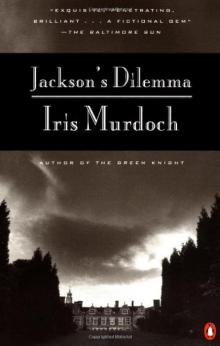 Jackson's Dilemma
Jackson's Dilemma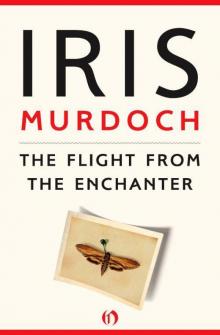 The Flight From the Enchanter
The Flight From the Enchanter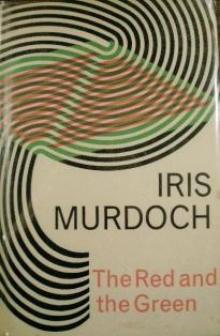 The Red and the Green (Vintage Classics)
The Red and the Green (Vintage Classics)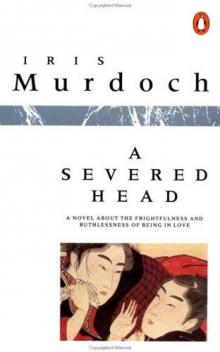 A Severed Head
A Severed Head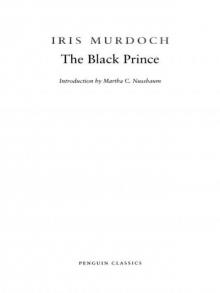 The Black Prince
The Black Prince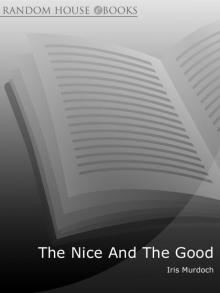 The Nice and the Good
The Nice and the Good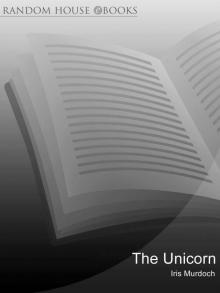 The Unicorn
The Unicorn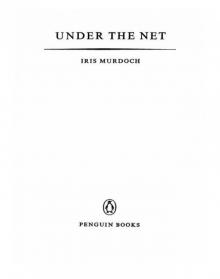 Under the Net
Under the Net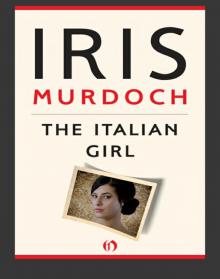 The Italian Girl
The Italian Girl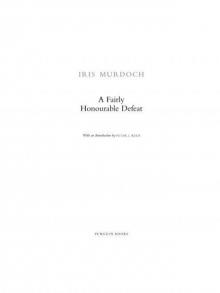 A Fairly Honourable Defeat
A Fairly Honourable Defeat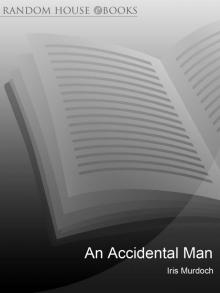 An Accidental Man
An Accidental Man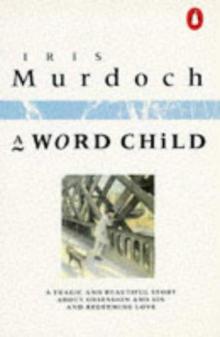 A Word Child
A Word Child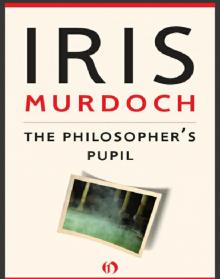 The Philosopher's Pupil
The Philosopher's Pupil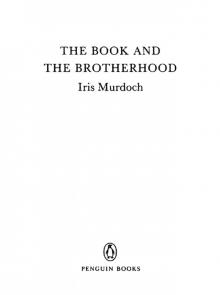 The Book and the Brotherhood
The Book and the Brotherhood The Good Apprentice
The Good Apprentice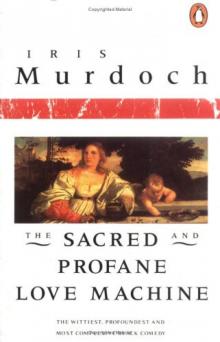 The Sacred and Profane Love Machine
The Sacred and Profane Love Machine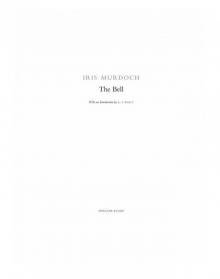 The Bell
The Bell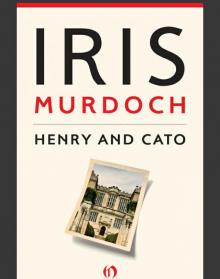 Henry and Cato
Henry and Cato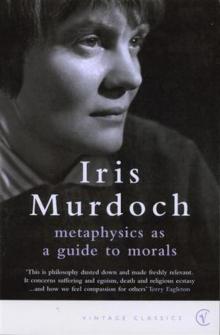 Metaphysics as a Guide to Morals
Metaphysics as a Guide to Morals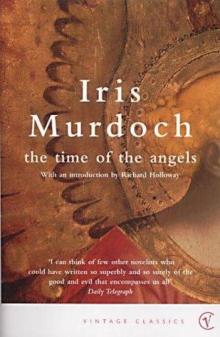 The Time of the Angels
The Time of the Angels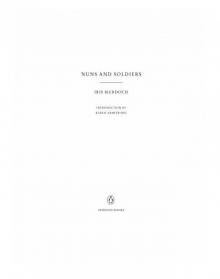 Nuns and Soldiers
Nuns and Soldiers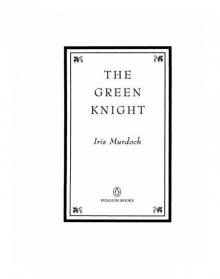 The Green Knight
The Green Knight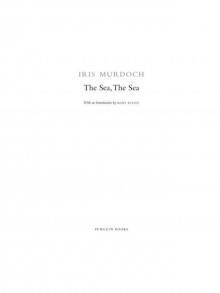 The Sea, the Sea
The Sea, the Sea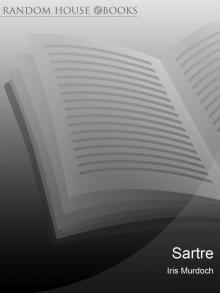 Sartre: Romantic Rationalist
Sartre: Romantic Rationalist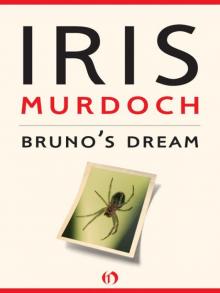 Bruno's Dream
Bruno's Dream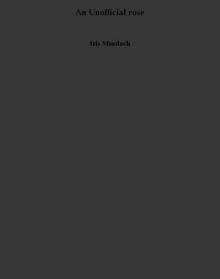 An Unofficial rose
An Unofficial rose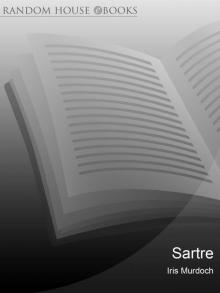 Sartre
Sartre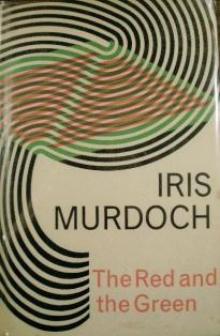 The Red and The Green
The Red and The Green